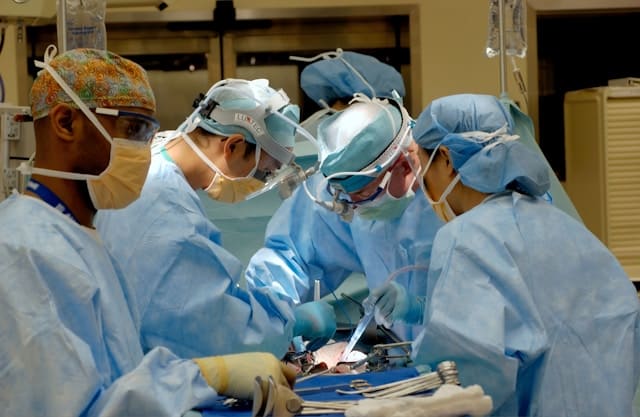Can Virtual Reality Help in Training Surgeons for Complex Procedures?

In the rapidly evolving field of medical technology, virtual reality (VR) is emerging as a game-changer. This technology, traditionally associated with the gaming industry, is now making its way into healthcare, transforming the way surgical training is imparted. Virtual reality offers a comprehensive, immersive learning experience that can significantly enhance the skill set of trainee surgeons. This article explores how VR technology might revolutionize medical education and surgical training.
Virtual Reality in Medical Training
The adoption of virtual reality in medical training is a significant advancement in healthcare technology. This method allows trainee surgeons to gain practical experience without the risks associated with traditional training procedures.
A découvrir également : How Is Edge AI Transforming On-Device Machine Learning?
The virtual environment mimics real-life surgical scenarios, granting trainees the opportunity to perform numerous surgeries virtually. This gives them a platform to make mistakes and learn from them without endangering any patient’s life. In essence, it provides a safe environment for learning and making mistakes in the surgical field.
Moreover, VR can expose trainees to a variety of surgical cases, including those that are rare or complex. This exposure may be difficult to achieve in a conventional training set-up, especially within a limited time frame. Thus, VR can significantly enrich the learning experience of surgical trainees.
A lire aussi : What Role Is 3D Printing Playing in Customizing Medical Devices for Patients?
Role of Virtual Reality in Skill Enhancement
One of the most significant benefits of virtual reality in surgical training is the enhancement of surgical skills. Through repeated practice in a virtual environment, trainees can gain mastery over intricate procedures.
This technology enables the simulation of tactile feedback, adding to the realism of the experience. Surgeons can feel the resistance while making an incision or suturing a wound, making the virtual surgery feel incredibly real. This feature can help in developing muscle memory, an essential aspect of surgical skill acquisition.
In addition, VR technology can also provide immediate feedback to trainees, helping them identify errors and rectify them promptly. This instant feedback can accelerate the learning process, improving the trainees’ performance over time.
PubMed and Other Scholarly Publications on VR in Surgery
Research studies and scholarly articles, many of which can be found on PubMed, provide substantial evidence about the effectiveness of VR in surgical training. Numerous studies have demonstrated that VR-trained surgeons made fewer errors and were faster in performing procedures than their non-VR-trained counterparts.
For instance, a study published in the British Journal of Surgery stated that VR-trained surgeons had a 29% decrease in the time taken to perform a procedure, and a 6% decrease in errors compared to those trained using traditional methods. These findings suggest that VR can be a powerful tool in training surgeons, leading to improved patient outcomes.
The Patient Experience and Virtual Reality
Virtual reality in surgical training doesn’t just benefit the surgeons. It also has the potential to significantly improve the patient experience. Surgeons trained using VR techniques are less likely to commit errors, thus ensuring safer surgical procedures for patients. Patients could have increased confidence in their surgeons, knowing that they’ve been trained using cutting-edge technology.
Furthermore, simulations can help surgeons communicate more effectively with their patients. They can use these virtual models to explain the procedure in detail, giving patients a clear understanding of what to expect. This transparency can go a long way in soothing patients’ anxieties, improving their overall healthcare experience.
Virtual Reality: A Paradigm Shift in Surgical Training
There is no denying that VR has the potential to bring about a paradigm shift in surgical training. As technology continues to advance, the realism and effectiveness of VR simulations are likely to increase, making them an integral part of medical education.
However, the implementation of VR in surgical training is not without its challenges. High costs, resistance to change, and the need for specialized training to use VR equipment are some of the hurdles that need to be addressed. However, the clear benefits of VR in enhancing surgical skills and improving patient outcomes make it worth the effort.
As we move forward, the healthcare sector must embrace these technological advancements and integrate them into their training modules. After all, the ultimate aim is to enhance the quality of healthcare and patient safety, and virtual reality holds immense promise in this regard.
Augmented Reality and Virtual Reality: A Comparative Analysis
While virtual reality (VR) is garnering much attention in the medical training landscape, it is also important to consider its close relative, augmented reality (AR). Both technologies offer unique advantages and can be used in tandem to elevate the surgical training experience.
Virtual reality immerses the user in a completely simulated environment, allowing them to interact with a virtual patient or surgical scenario. This total immersion can help trainees to develop a thorough understanding of surgical procedures and anatomy, honing their skills without risk to actual patients.
On the other hand, augmented reality layers virtual elements onto the real world, offering a different kind of experience. The real-time overlay of digital information can enhance a surgeon’s perception of the real world. AR can be particularly effective in complex surgeries where real-time imaging and data can be superimposed onto the patient’s body, aiding the surgeon’s precision.
For instance, in the operating room, AR can guide surgeons by projecting images of internal structures onto the patient’s body, assisting the surgeon in navigating through complex procedures. This combination of real and virtual worlds can provide a rich, multi-dimensional learning experience for trainees.
While VR and AR vary in their approach, they both hold immense potential in advancing surgical education. By integrating both technologies into the training curriculum, medical education could potentially be transformed, equipping surgeons with detailed knowledge and sophistical skills necessary in the modern operating room.
Conclusion: The Future of VR in Surgical Training
The advent of virtual reality in surgical training marks a significant shift in medical education. By offering immersive, hands-on training experiences, VR has the potential to significantly enhance surgical skills and performance, reduce errors, and ultimately improve patient safety.
Studies presented on platforms such as PubMed and Google Scholar further attest to the efficacy of VR training. Enhanced surgical speed and precision, coupled with a reduction in errors, demonstrate the tangible benefits of this innovative approach. Beyond that, VR’s potential contribution to patient education and the overall healthcare experience cannot be understated.
Nonetheless, despite its promise, VR’s integration into surgical training faces several challenges. Expense, resistance to change, and the need for specialized training are notable barriers. However, given the compelling advantages and the advances in technology, these obstacles are surmountable.
As we look forward to the future of surgical training, it is clear that VR and related technologies such as AR will play a critical role. The integration of these technologies into the training regime can bring about a new era of surgical proficiency and patient safety. The healthcare sector must, therefore, be ready to embrace and harness the power of these emerging technologies. Leveraging virtual reality in surgery training is not just an exciting frontier; it is an essential step towards a safer, more effective healthcare future.
